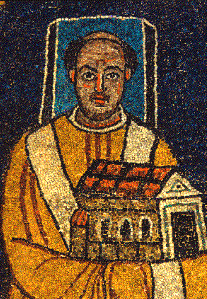
Pope Paschal I was the bishop of Rome and ruler of the Papal States from 25 January 817 to his death in 824.

Saint Lawrence or Laurence was one of the seven deacons of the city of Rome under Pope Sixtus II who were martyred in the persecution of the Christians that the Roman Emperor Valerian ordered in 258.

The Basilica of Saint Clement is a Latin Catholic minor basilica dedicated to Pope Clement I located in Rome, Italy. Archaeologically speaking, the structure is a three-tiered complex of buildings: (1) the present basilica built just before the year 1100 during the height of the Middle Ages; (2) beneath the present basilica is a 4th-century basilica that had been converted out of the home of a Roman nobleman, part of which had in the 1st century briefly served as an early church, and the basement of which had in the 2nd century briefly served as a mithraeum; (3) the home of the Roman nobleman had been built on the foundations of republican era villa and warehouse that had been destroyed in the Great Fire of AD 64.
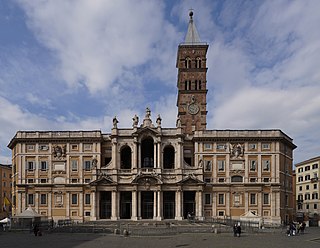
The Basilica of Saint Mary Major, or church of Santa Maria Maggiore, is a Major papal basilica as well as one of the Seven Pilgrim Churches of Rome and the largest Catholic Marian church in Rome, Italy.

The Basilica of Santa Maria in Trastevere ; English: Our Lady in Trastevere) is a titular minor basilica in the Trastevere district of Rome, and one of the oldest churches of Rome. The basic floor plan and wall structure of the church date back to the 340s, and much of the structure to 1140–43. The first sanctuary was built in 221 and 227 by Pope Callixtus I and later completed by Pope Julius I. The church has large areas of important mosaics from the late 13th century by Pietro Cavallini.
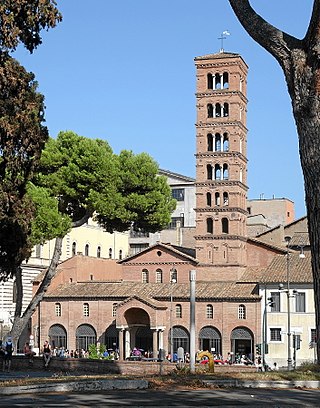
The Basilica of Saint Mary in Cosmedin is a minor basilican church in Rome, Italy, dedicated to the Virgin Mary. It is located in the rione (neighborhood) of Ripa. Constructed first in the sixth century as a diaconia (deaconry) in an area of the city populated by Greek immigrants, it celebrated Eastern rites and currently serves the Melkite Greek Catholic community of Rome. The church was expanded in the eighth century and renovated in the twelfth century, when a campanile was added. A Baroque facade and interior refurbishment of 1718 were removed in 1894-99; the exterior was restored to twelfth-century form, while the architecture of the interior recalls the eighth century with twelfth-century furnishings. The narthex of the church contains the famous Bocca della Verità sculpture.

The Parish Basilica of Santa Maria del Popolo is a titular church and a minor basilica in Rome run by the Augustinian order. It stands on the north side of Piazza del Popolo, one of the most famous squares in the city. The church is hemmed in between the Pincian Hill and Porta del Popolo, one of the gates in the Aurelian Wall as well as the starting point of Via Flaminia, the most important route from the north. Its location made the basilica the first church for the majority of travellers entering the city. The church contains works by several famous artists, such as Raphael, Gian Lorenzo Bernini, Caravaggio, Alessandro Algardi, Pinturicchio, Andrea Bregno, Guillaume de Marcillat and Donato Bramante.

The Basilica of Saint Praxedes, commonly known in Italian as Santa Prassede, is an early medieval titular church and minor basilica located near the papal basilica of Saint Mary Major, on Via di Santa Prassede, 9/a in rione Monti of Rome, Italy. The current Cardinal Priest of Titulus Sancta Praxedis is Paul Poupard.

There are more than 930 churches in Rome, which makes it the city with the largest number of churches in the world. Almost all of these are Catholic.

Santa Cecilia in Trastevere is a 5th-century church in Rome, Italy, in the Trastevere rione, devoted to the Roman martyr Saint Cecilia.

The early Christian imperial basilica of the Saints Martyrs Vitale, Valeria, Gervasio and Protasio known more commonly as the basilica of San Vitale and Compagni Martiri in Fovea or more simply as San Vitale al Quirinale. It is the oldest Catholic place of worship in the historic center of Rome, located in via Nazionale. The imperial basilica of San Vitale al Quirinale, built under the pontificate of Pope Siricius after 386 and consecrated and richly decorated by Pope Innocent in 402 is the first public Christian basilica with a baptistery not founded on pre-existing pagan temples, mentioned in the Liber pontificalis, built by the Emperor Theodosius at the behest of Saint Ambrose of Milan, in honor of the miraculous discovery of the bodies of martyrs Gervasius and Protasius in Milan. It is the most frescoed basilica in Rome.

The Basilica of St. Stephen in the Round on the Caelian Hill is an ancient basilica and titular church in Rome, Italy. Commonly named Santo Stefano Rotondo, the church is Hungary's "national church" in Rome, dedicated to both Saint Stephen, the first Christian martyr, and Stephen I, the canonized first king of Hungary. The minor basilica is also the rectory church of the Pontifical Collegium Germanicum et Hungaricum.

Santa Francesca Romana, previously known as Santa Maria Nova, is a Roman Catholic church situated next to the Roman Forum in the rione Campitelli in Rome, Italy.
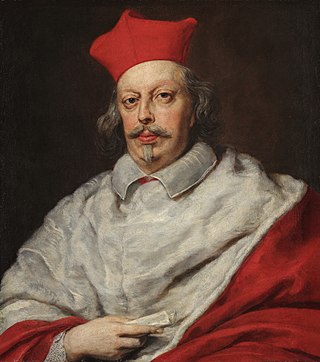
Carlo de' Medici was the son of Ferdinando I de' Medici, Grand Duke of Tuscany and Christina of Lorraine.
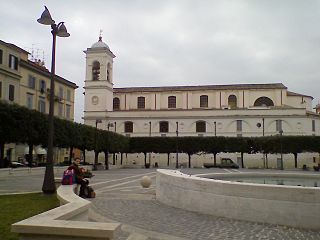
The Diocese of Albano is a Latin suburbicarian see of the Diocese of Rome in Italy, comprising seven towns in the Province of Rome. Albano Laziale is situated on the Appian Way some 15 kilometers from Rome.

The Basilica of Saints John and Paul on the Caelian Hill is an ancient basilica church in Rome, located on the Caelian Hill. It was originally built in 398.

Innocenzo Cibo was an Italian cardinal and archbishop.
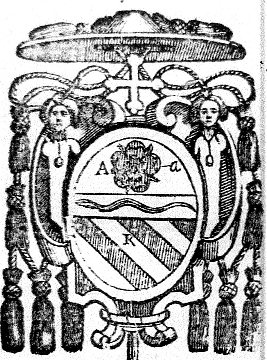
Giambattista Orsini was an Italian Roman Catholic cardinal. He served as papal legate to the Marches of Ancona.
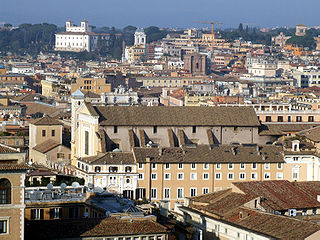
Santi Dodici Apostoli, commonly known simply as Santi Apostoli, is a 6th-century Roman Catholic parish and titular church and minor basilica in Rome, Italy, dedicated originally to St. James and St. Philip, whose remains are kept here, and later to all Apostles. Today, the basilica is under the care of the Conventual Franciscans, whose headquarters in Rome is in the adjacent building. It is the Station church for Friday, the first week of Lent.
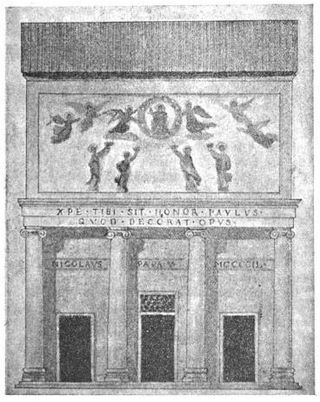
Santa Maria in Turri was an ancient church in the city of Rome, demolished in the Renaissance. It adjoined the outside atrium of the ancient Basilica of St. Peter, one of a complex of small churches or oratories that grew up around the site.

























